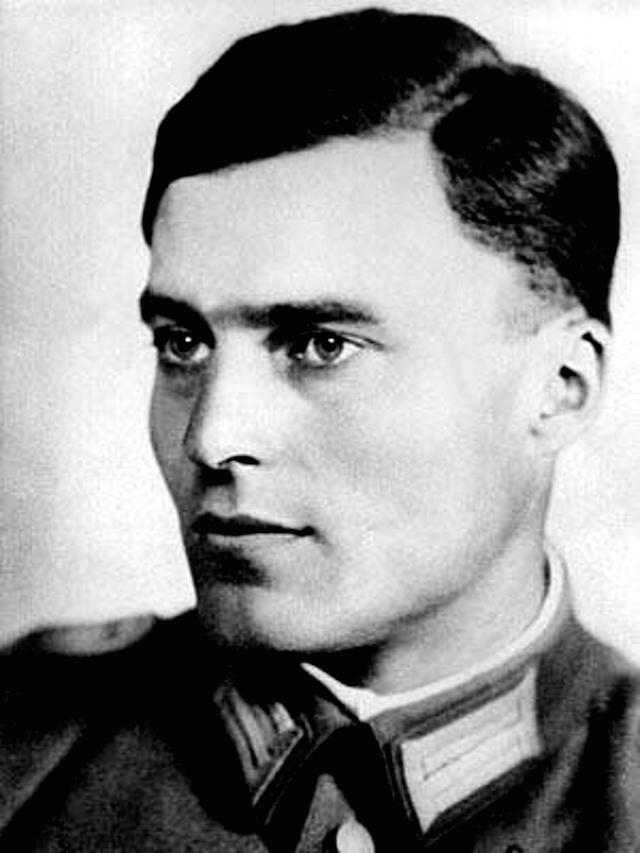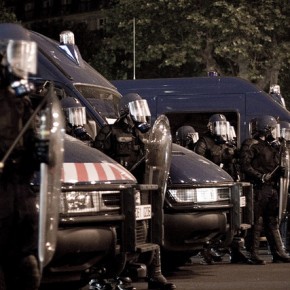The intellectual foundations contemporary German fascism like increasingly in the long-forgotten writers and ideologues of the so-called “Conservative Revolution” of the Weimar era, which much better serve their needs than Hitler’s speeches ever could.
The Weimar Republic is generally remembered for its explosion of modernist and progressive culture. But it was also the era in which modern German fascism came into its own. Already during the First World War, a new authoritarian militarism had emerged, which had no problem leaving the old monarchy behind and developing independently into a radical revanchist ideology.
The Weimar Republic therefore not only faced various well-armed right-wing opposition movements, it also experienced a flowering of reactionary cultures and ideas. The immense creativity, contradictions, and just plain weirdness of German fascism is rooted in the long Weimar decade, as large swaths of the population refused to accept the republic and everything it stood for, while all the while accepting that a return to the old order had become impossible.
As a result, reactionaries of all stripes began to formulate diverging visions of an alternative, authoritarian modernity, ranging from an aristocratic militarism, over populist völkisch-peasant ideologies, to more esoteric, often pagan religious Weltanschauungen like anthroposophy and the Waldorf movement.
The only thing that united all of these often openly revolutionary, movements was their visceral loathing of democracy, their rejection of Western and especially American cultural influence, and of the liberalization and commercialization of society – and of course their hatred of what almost all of them perceived as both agent and symbol of these developments: the Jews. Today’s anti-American, anti-Western, pro-Russian reactionaries, who hate globalization and easy consumerism, but are always open to esoteric theories about the hidden power of “plutocratic finance capital” are not so different.
Many of the most well-known German intellectuals and writers of the time can be counted among this modern reactionary movement: The early Thomas Mann, Martin Heidegger, Carl Schmitt, the brothers Jünger, Gottfried Benn, Oswald Spengler, the poet Stefan George. The names of many others would have long been forgotten, and their works out of print, if it had not been for a certain magazine and printing press in Saxony which has faithfully kept their memory alive and is now again actively, and with growing success, promoting their ideas. Always wary of populism and street politics, this self-proclaimed reactionary intellectual elite is nonetheless deeply involved in the growing right-wing networks, and at times its informal leader, Götz Kubitschek, has even spoken at demonstrations in Dresden and Leipzig. They strongly distance themselves from ordinary Nazi-groups, while still refusing to make peace with the liberal and democratic Federal Republic.
These new ultra-nationalists no longer deny the Holocaust, but they nonetheless perceive it as a problem to be solved, as an obstacle standing in the way of a healthy, aggressive and chauvinist, German nationalism. In their view, the idea of a collective historical responsibility of all Germans is used as a weapon to cow a healthy patriotism – an idea which unfortunately is not as out-of-the-mainstream as one would hope.
In a sense, it is only an even grimmer variation on the American right wing’s horror at the idea that they should be expected to “apologize for America’s sins.” It is an expression of the realization that history matters and cannot be evaded. In order to finally transcend the shackles of historical guilt, this new right aims to construct a history of German reaction that is untainted by the Holocaust, a history which, in fact, paints the Nazis as betrayers of reactionary values. For this project, the “Conservative Revolution” is the perfect reference point. Of course, no sane individual would deny that the reactionary ideas of the Weimar era lead in a straight line to the Nazi state – but it is true that many of the leading figures of the Conservative Revolution, which are now again being celebrated, personally had an ambiguous relationship with actually-existing National Socialism.

Heidegger was only in the very beginning an enthusiastic Nazi-activist, but soon grew disillusioned. And Ernst Jünger, eminence grise of the New Right, did after all publish what was probably the only novel which criticized the regime during the Nazi era – while at the same time faithfully fulfilling his duty as an army officer until the very end.
The perfect icon for an anti-Nazi fascism, however, is none other than Graf Stauffenberg himself, who led the attempt to assassinate Hitler in 1944. As already mentioned, the flag which his conspiracy created for the new government, a black and gold cross on red ground, has become the defining icon of the new anti-refugee protest movements. Stauffenberg may have done a brave and comendable thing, and he has not without right become an icon of anti-fascist resistance (just recently celebrated in a movie starring Tom Cruise.) But he was not a virtous person as we would understand it today. How could he be? He was an aristocrat. He laughed at the idea of human equality.
Stauffenberg’s entire life was spent praying for war. He was an anti-Semite, and when he took part in the occupation of Poland, he had no objection in principle to the enslavement of Slavic people and Jews. In fact there is little doubt that, like most people of his class in the military high command, he would have easily gotten over the scruples that he did have, if the war had been more successful. And when Stauffenberg did include democrats and socialists in his conspiracy and the planned new order, he did so out of strategic reasons – personal affection for individual social democrats like his good friend Julius Leber notwithstanding. His loyalty belonged to a romantic, authoritarian, and militarist nationalism – in this he was even more of an authentic fascist than merely a traditional aristocrat.
As a young man, Stauffenberg had been a member of the exclusive and elitist circle of the poet Stefan George, a more spaced-out version of the American cult of Leo Strauss perhaps, only transplanted to pre-war Germany, which formed his worldview all his life. In this cultlike Männerbund, George and his disciples – all beautiful young men – celebrated an aesthetic esoteric, and anti-modernist culture that revolved around a mystical conception of German destiny.
At the same time, visionary and traditionalist, they were believers in what they called the “New Reich.” Often they referred to their close circle as a “state” and the poet George as their “Master”. In their romantic opposition to modern culture, they put their faith in a set of higher, more arcane values – and in this they understood themselves as members of a “Secret Germany” which would one day assert itself over the rotten, “un-German” present. They were aristocratic in their elitism, but a precursor of fascism in their belief in a radical, messianic transformation of modern society, which filled them with contempt.

In fact, “Secret Germany” would later become a code word for the elitist opposition to first the republic, and later the Nazi regime. And it is nowadays being thrown around again by exalted right-wing activists, who feel wholly alienated from the Federal Republic.
It is questionable how much influence such ideas can still have in the 21st century. They seem to be attractive among some young “identitarian” intellectuals in Austria and Germany – and they could do the work of re-politicising some of the university fraternities, which have always been an area of retreat for conservative and nationalist ideas in the hostile progressive atmosphere of Germany’s universities.
Like many conservative institutions in Germany, fraternities have modernized considerably in recent years, embracing their role as exclusive, elite networking spaces, but shedding much of their nationalist fervor, which dates back to the time of the anti-Napoleonic wars. A considerable faction of the fraternities, however, has split from the modernized mainstream, and clings to an old-fashioned nationalism – “ethnic” purity clauses, uniforms, and old fencing-rituals included.
A few members of fraternities still today proudly display scars from these fencing rituals in their face. These may be marginal groups, but their entire point, after all, is to create enduring and influential upper-class networks. It should be remembered that the Jobbik Party only 15 years ago was nothing but a right-wing student movement as well, but since has rapidly transformed the Hungarian political scene.
What these ideologues of the Conservative Revolution are already doing is providing the protest movements in the streets with an authoritarian ideology, which is radical, but at the same time open and flexible enough to integrate the frustrations and the anger of ordinary people. Calling them “Nazis” won’t hurt them. If they were simply Nazis, they would be much easier to oppose.
What we are seeing, rather, is a genuine political vision, advocated by a movement which fits perfectly into our stagnating, regressive times. We may wish them to be something as surreal and ridiculous as actual Nazis, or as irrelevant as some maladjusted, if dangerous, violent kids. They may be something far more dangerous, instead – and they may have a future.
Photographs courtesy of Metropolico.org, Wikimedia, and Joel Schalit. Published under a Creative Commons license.





